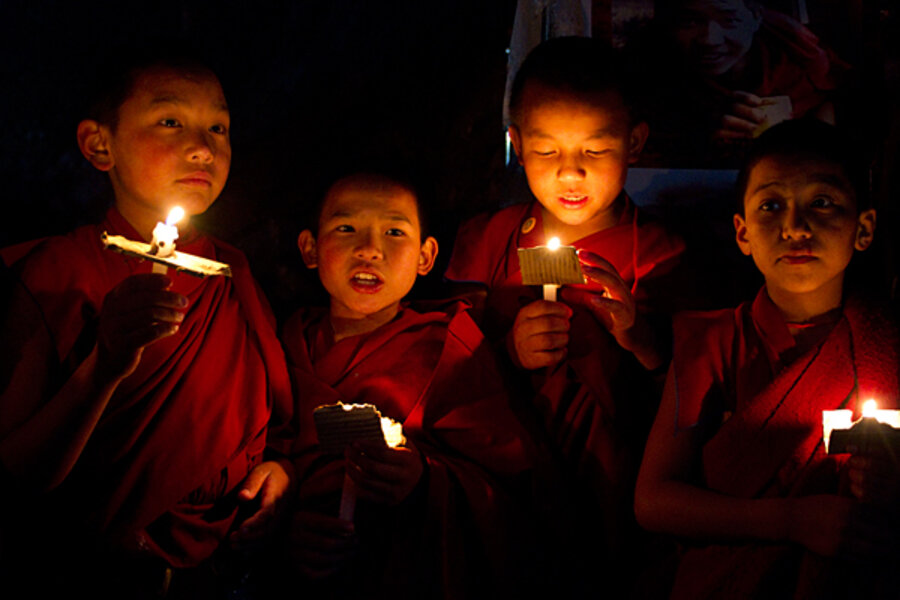Chinese police fire into crowd of Tibetan protesters, say witnesses
Loading...
| Beijing
About 30 Tibetans injured after Chinese police fired into a crowd of protesters in a restive southwestern region were seeking shelter Tuesday in a monastery while military forces surrounded the building, a Tibetan monk said.
Chinese authorities said Monday's unrest was caused by a "mob" and that overseas advocacy groups were twisting the truth about what happened in order to undermine the government.
The violence in Luhuo county in the politically sensitive Ganzi prefecture of Sichuan province comes amid high tensions after at least 16 Buddhist monks, nuns and other Tibetans self-immolated in the past year. Most have chanted for Tibetan freedom and the return of their spiritual leader, the Dalai Lama, who fled to India amid an abortive uprising against Chinese rule in 1959.
A monk from Luhuo county's Shouling monastery, one of the most famous monasteries in the region, told The Associated Press by phone that 33 wounded people were being cared for in a clinic within the religious compound. At least 50 military vehicles were parked outside the monastery, he said.
"They want to take the injured people away but we won't let them because we don't trust them, we don't know what will happen to them," said the monk, who would not give his name out of fear of government retaliation. He said the monks worried about the massive security response.
"We are all in the monastery. Without the local residents around, the monks don't dare to go out," he said.
Accounts of Monday's violence differ, and independent confirmation is impossible due to a heavy security presence and lack of access to outsiders. Tibet activist groups said police opened fire on thousands of peaceful protesters, while the Chinese government says a far smaller number of Tibetans and police clashed after the Tibetans attacked a police station and smashed cars.
The monk at the Shouling monastery told the AP that the protesters had been peaceful until police fired into the crowd, killing one man. "When it all started we were only standing in the streets shouting slogans," he said. After police opened fire, the Tibetans responded by smashing police cars and windows, he said. But he rejected official accounts that five police were also injured in the clash.
He said Tibetans were frustrated by the government's tight restrictions on their religious practices.
"The Chinese government says we have religious freedom but we have no freedom at all. If we did, then they would not be talking badly about the Dalai Lama. They say you cannot listen to the Dalai Lama, if we have pictures of the Dalai Lama we have to take them down," he said. "This really hurts our feelings; they hurt our self-esteem."
The London-based International Campaign for Tibet said three Tibetans were killed and nine wounded, while another group, Free Tibet, said one died and up to 30 others were shot and wounded in Luhuo, also known as Draggo in Tibetan.
Chinese Foreign Ministry spokesman Hong Lei slammed such groups, accusing them of exaggeration. Hong said order has been restored after one Tibetan died and four others were injured, and that five police were also wounded.
"Overseas forces of 'Tibet independence' have always fabricated rumors and distorted the truth to discredit the Chinese government with issues involving Tibet," Hong said in remarks carried by the official Xinhua News Agency.
Xinhua said more than 100 people, including monks, some armed with knives and stones, gathered to attack a police station after hearing rumors that three monks would set themselves on fire. They smashed two police vehicles and two fire engines and stormed shops, it said.
Ganzi is a rugged, deeply Buddhist region filled with monasteries that has been at the center of dissent for years. It is among the traditionally Tibetan areas of Sichuan province and other parts of western China that have been closed to outsiders for months amid a massive security presence.
Many Tibetans resent Beijing's heavy-handed rule and the large-scale migration of China's ethnic Han majority to the Himalayan region. While China claims Tibet has been under its rule for centuries, many Tibetans say the region was functionally independent for most of that time.





